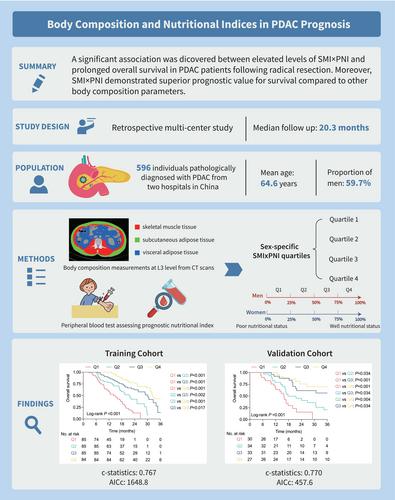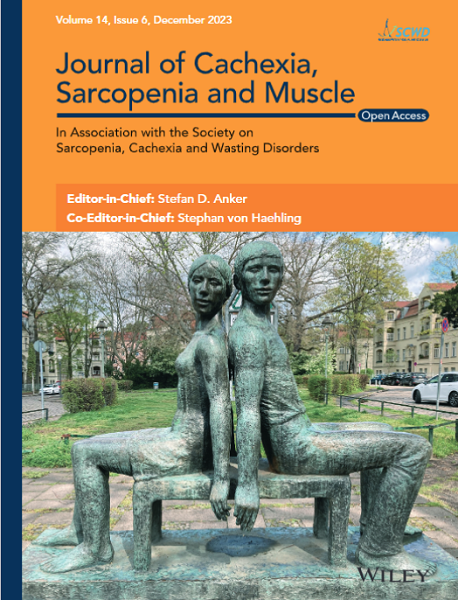Integrating Body Composition and Nutritional Indices: A Novel Prognostic Tool for Survival in Pancreatic Cancer
Abstract
Background
Sarcopenia and malnutrition have been independently associated with a poorer prognosis in pancreatic ductal adenocarcinoma (PDAC), but their combined association with patient outcomes is not fully understood. This study aimed to systematically evaluate the synergistic effects of body composition parameters and nutritional index as prognostic indicators in patients with PDAC.
Methods
A total of 596 patients with PDAC who underwent surgical resection from two centres were initially enrolled in this retrospective study. Body composition parameters, including the skeletal muscle index (SMI), subcutaneous adipose tissue index (SATI), visceral adipose tissue index (VATI) and skeletal muscle density (SMD), were assessed using a single cross-sectional image at the L3 level from preoperative computed tomography scans. The prognostic nutritional index (PNI) was used to assess nutritional status. The combined indices were defined as body composition parameters multiplied by PNI.
Results
A total of 463 patients were finally included in the analysis, with 339 in the training cohort and 124 in the validation cohort. The median (interquartile) age was 66 (60–72) years, and 274 (59.2%) were male. The median values of SMI, SATI, VATI, SMD, as well as the combined indices of these parameters with PNI, varied significantly by sex in the training cohort. Patients were categorized into sex-specific quartiles (Q1 to Q4) based on SMI × PNI levels. Both overall survival (OS) and disease-free survival (DFS) exhibited significant differences across these quartiles (p < 0.001). Though all body composition parameters and their combinations with PNI were independent predictors of OS in multivariate analysis, the combination of SMI × PNI demonstrated superior prognostic performance compared to other indices (c-statistics: 0.767, AICc: 1648.8). These results remained consistent across stratified analysis. The external validation cohort confirmed that SMI × PNI exhibited enhanced predictive and discriminative power compared with other indices.
Conclusions
SMI × PNI represents a robust and accessible prognostic tool for assessing survival in patients with PDAC. Further prospective studies are needed to validate its effectiveness across diverse populations and clinical settings.


 求助内容:
求助内容: 应助结果提醒方式:
应助结果提醒方式:


